This weekend, a very unusual type of steam train made a rare visit to London, a steam train without a locomotive.
At a time when all steam trains were of the “locomotive pulling carriages” design, embedding a steam engine inside a carriage was a radical idea. To our mind, seeing a locomotive pulling a train is a rare sight, but for the 19th-century traveller, to see a carriage seemingly moving on its own would have been a magical sight.
Even if the steam coming out of the top was a bit of a give-away as to the propulsion method.
The rationale for the steam railmotor was cost-saving — the smaller units could be used on less popular railway lines at a lower cost, making them more economical to run.
One such line was a short stretch that ran from Southall station in West London down to Brentford next to the Thames.
Built mainly for cargo, it also carried passengers, for a while. Nowadays it only carries cargo, but this weekend, passengers returned. As such, Southall saw an unusual gathering of “men who ride trains”, a quantity of future “men who ride trains”, and rather smaller numbers of “ladies who ride trains”.
Peering over nearby bridges, or loitering for excessive amounts of time on public platforms, we were all there to see, or ride in Steam Railmotor vehicle No. 93, which has been fully restored to working order.
The plan had been to run the railmotor and a carriage, but the carriage was taken off, leading to some serious revision to the timetable. A mechanical problem in the morning, and difficulties with water at lunchtime added to the problems, resulting in quite a serious delay to the trips.
My noon ride ended up being a 1:15pm trip — and while most laughed off the delay, a few of the more socially awkward members of the men who ride trains brigade evidently struggled to understand the nature of a delay on the railway.
However, waiting was enlivened by the familiar sound down below of a steam engine chugging away on an earlier trip and a waft of familiar steam train flinty smell from the engine.
Eventually though, names were checked off, boarding passes handed out, and people let down on the platform to wait for the railmotor to return, which gave the men who photograph trains a chance to photograph the arrival of the train to the station.
Finally though, the grand prize, a trip on the train itself, in the fully restored interior. The seats aren’t original, but came from scrapped trams in Australia — but they are of the correct design. The gas lighting sadly no longer permitted, so electric bulbs were installed. The roller blinds were of the original fabric design, but had inherited the originals temperamental behaviour with rolling up, so we were asked to leave them alone.
Other than that, it was a regular trip in a small luxurious (by modern standards) train carriage. Occasional toots from the engine, and the sound of chugging to denote an unusual power source, but otherwise, just a pleasant ride through ruralish London.
A number of passengers nattered away about ales and trains. One had a stopwatch and took timing notes, others had notepads. A couple seemed to be almost asleep. A couple of children displayed the excitement of being on a real steam train that was lacking in many of the passengers.
For me, the delight of riding an unusual train that was comfortable and pleasant to ride in along a bit of rail track that is not possible to ride any other time. I just sat back and enjoyed it.
Past the golf course, where not a single golfer even looked over as the chugging sound of a steam train grew louder. Past a few photographers on the sidelines who had found ideal spots to watch. Eventually to the end of the line — which is today in an industrial site — and time for the driver to swap ends, and for men who photograph trains to get a view of the tracks.
Now a clever trick. I had faced forwards on the way out, so would be sitting backwards on the way home? No! For these seats have a clever mechanism that lets the backrest flip over to the other side and effectively turns the seat to face the other direction.
Now that is something that has to make a return to the railways!
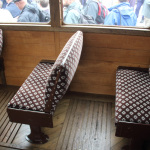 |
 |
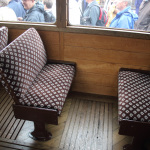 |
The trip back also offered the main thrill of riding in a steam train — the steam. On the outward trip, the engine bit was behind us, but now it was ahead, and billows of steam rolled along the sides of the carriage.
That amazing smell of burnt coal that today delights the senses but was reviled as an all too familiar stench by our predecessors.
Back past the golf course, and the railway crossing, past the canal seen just in the distance through the trees, under the Picadilly line and the motorway, heading back to Southall.
Just a few minutes there and back, but also transported back a hundred years.


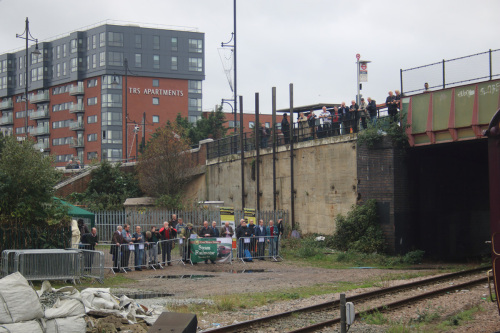

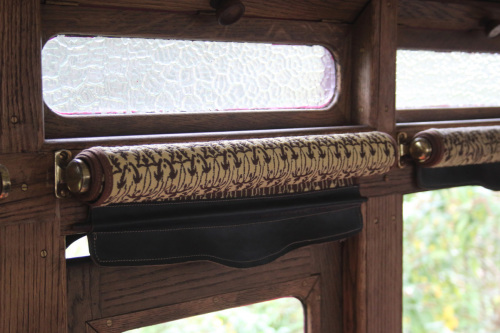
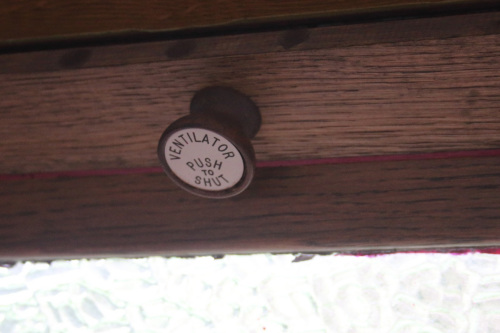
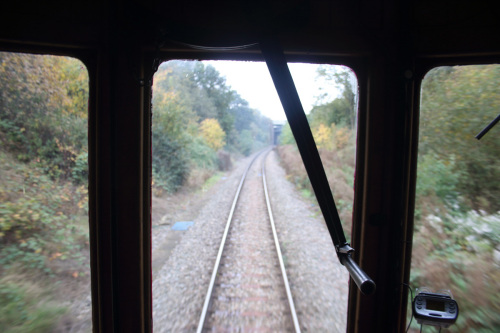
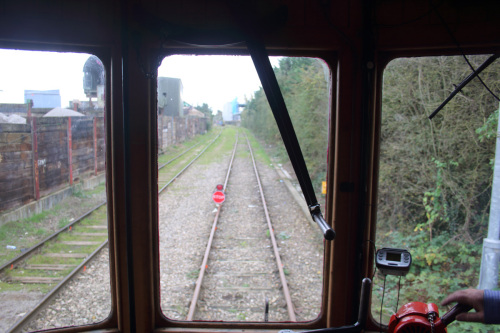
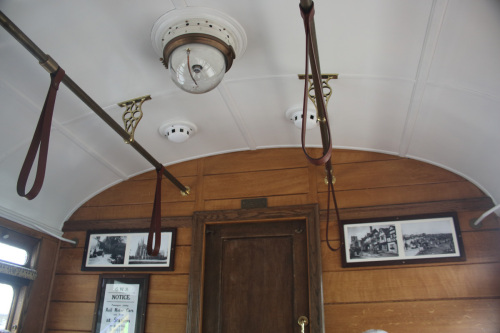
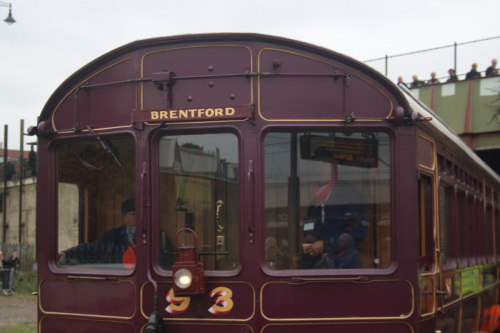






I’ve been on that stretch of track … behind a train … behind a steam-train, that is!
In the 1980s there was a steam locomotive preservation group based at Southall, and I read in the local papers about an open-day ‘with steam’. I ‘borrowed’ a friends two children for the afternoon (on the pretense of teaching them about steam!) and went along. I fully expected them to be bored with it, but they said we couldn’t leave until we’d been on the train! So, we had to take the steam-train down to Brentford and back.
Combining an engine and carriage dates back to the 1840s, admittedly with little success.
The first run was delayed so that the chimney could be removed as it was apparently out-of-gauge (pics somewhere on Flickr). I wonder if that was anticipated, and what NR and the HMRI would have to say about it. Was there another ” mechanical problem in the morning”?
Reversible seats were common on trams, much less so in railway carriages.
The absence of the trailer was due to the HMRI (or whoever) not yet having approved its use for ‘main line’ working, despite the branch being little more than a long siding. They, and their predecessors, have always been chary about push-pull working (if that’s the correct term here – perhaps ‘auto’, being GWR).